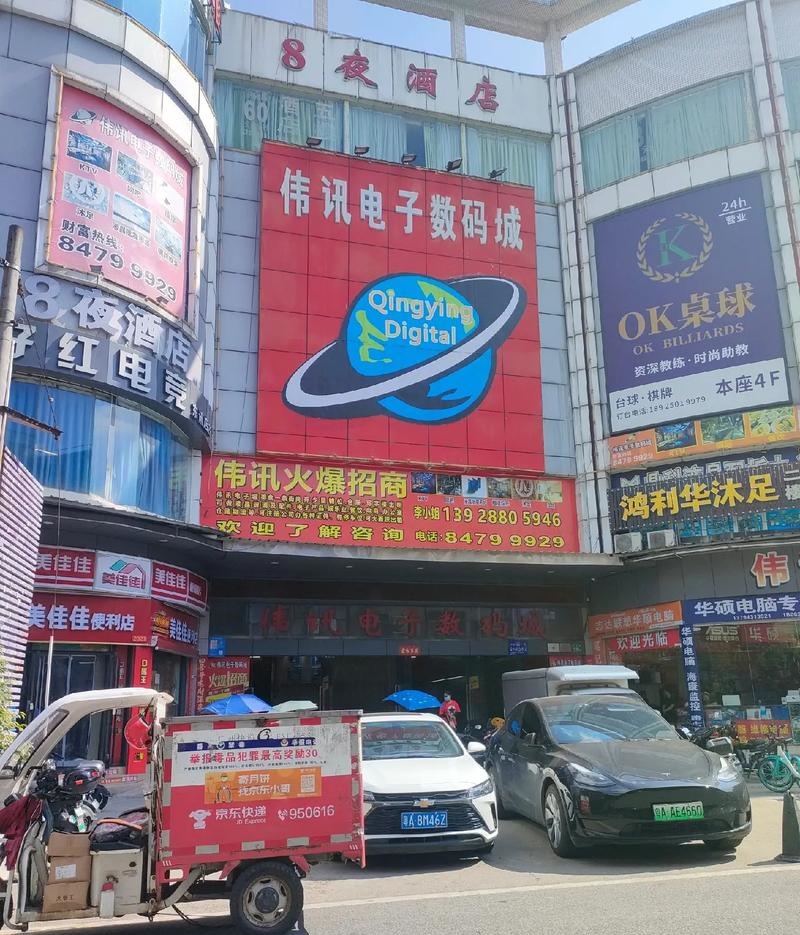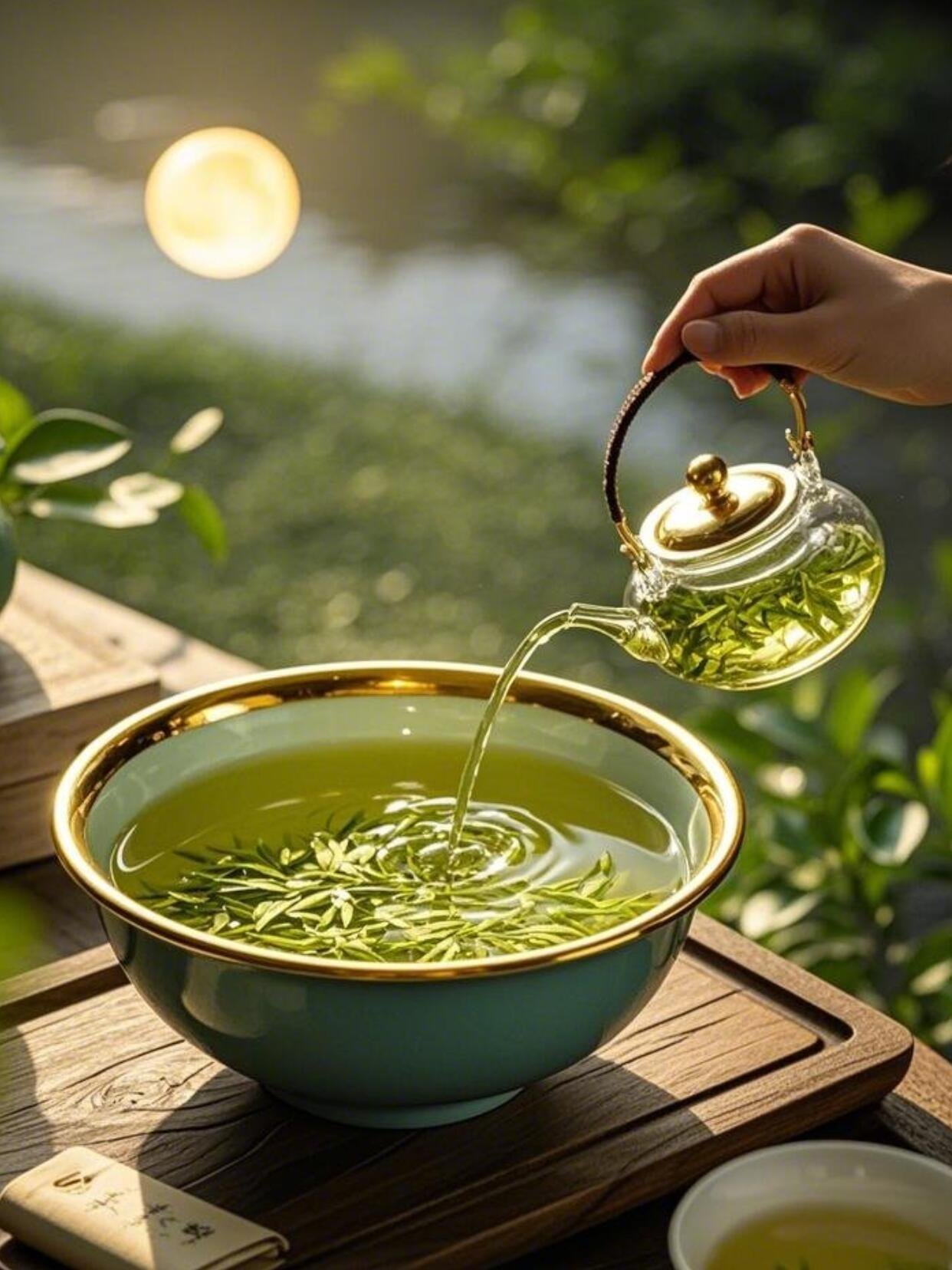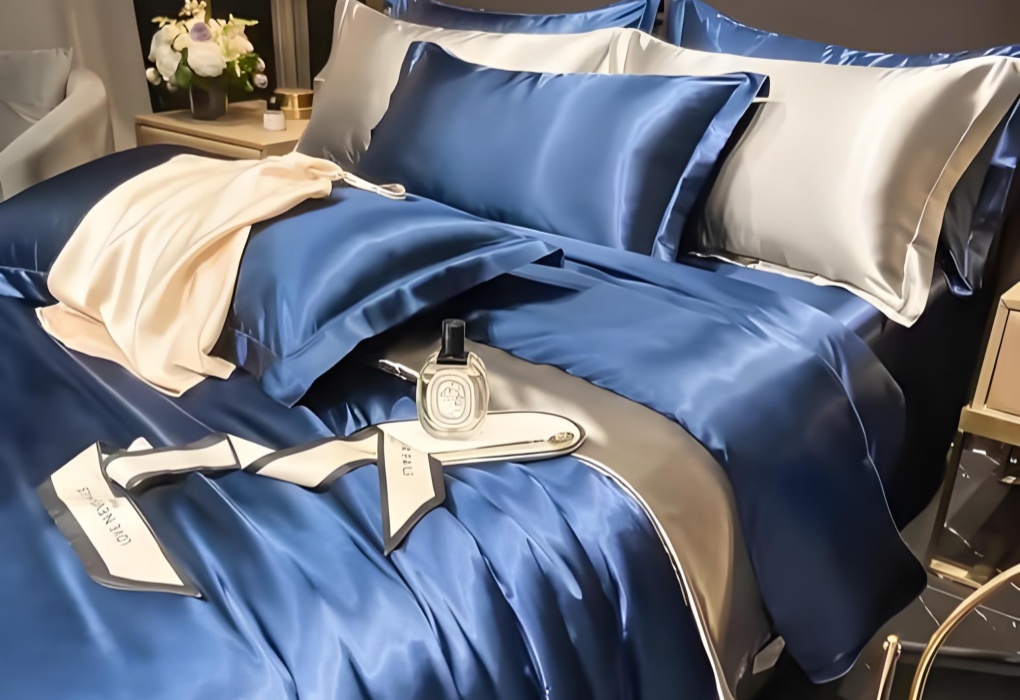Looking for the best China Souvenirs to take home? This guide goes beyond fridge magnets. Whether you're into tradition, symbolism, or just practical gifts, we've handpicked 24 items that travelers love—each one packed with cultural meaning. From silk scarves and jade bangles to handmade fans and lucky red knots, these China Souvenirs are easy to pack, affordable, and full of charm. Whether you shop in Beijing’s hutongs or Shanghai’s markets, you’ll find something here worth keeping—or gifting.
1. Panda Souvenirs — National Symbol and Friendly Gifts
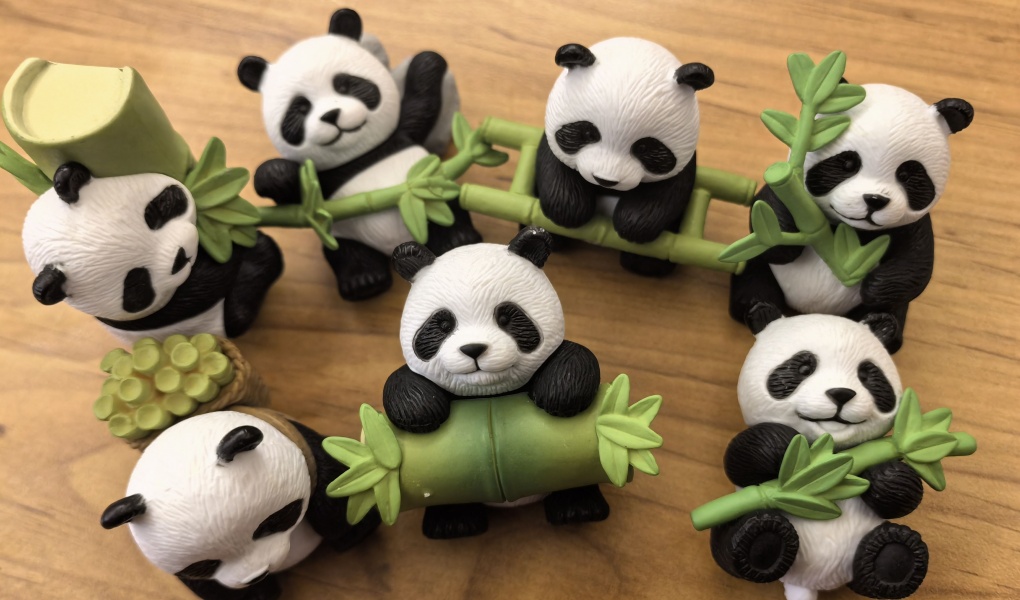
Panda Souvenirs
Let’s be honest—who doesn’t love pandas? They’re more than cute. When I first saw a real panda at the Chengdu Panda Base, it wasn’t just a “tick-the-box” tourist thing. There’s something gentle and comforting about them—slow-moving, peaceful, and weirdly relatable. Bringing home a panda souvenir felt like bringing home a piece of calm, a reminder to slow down and smile. Plus, for kids or friends, it’s a guaranteed hit. No one frowns at a stuffed panda.
- Where to Buy: The best places to buy panda souvenirs are major tourist destinations like the Chengdu Research Base of Giant Panda Breeding, Beijing Zoo, or souvenir shops in airports and train stations. You’ll also find a wide range online via platforms like Taobao or JD.com (if you're using a Chinese address or hotel delivery).
- Price Range: Small plush toys and magnets usually cost ¥10–¥30, while larger stuffed animals or premium handmade figurines can go from ¥80–¥500. You’ll easily find options that look great without spending much.
- How to Bring It Back: Soft toys are super easy to pack—just squish them into your luggage. For ceramic pandas or hand-painted ones, wrap them in bubble wrap or ask the store for a padded box. Avoid anything with batteries or sound chips when flying, to skip delays at security.
Want a practical shopping guide for your China trip? Read Things to Buy in China 2025 — What to Buy, Where to Find, and How to Make It Count and go beyond basic souvenir shops.
2. Jade Jewelry — Purity, Peace, and Longevity
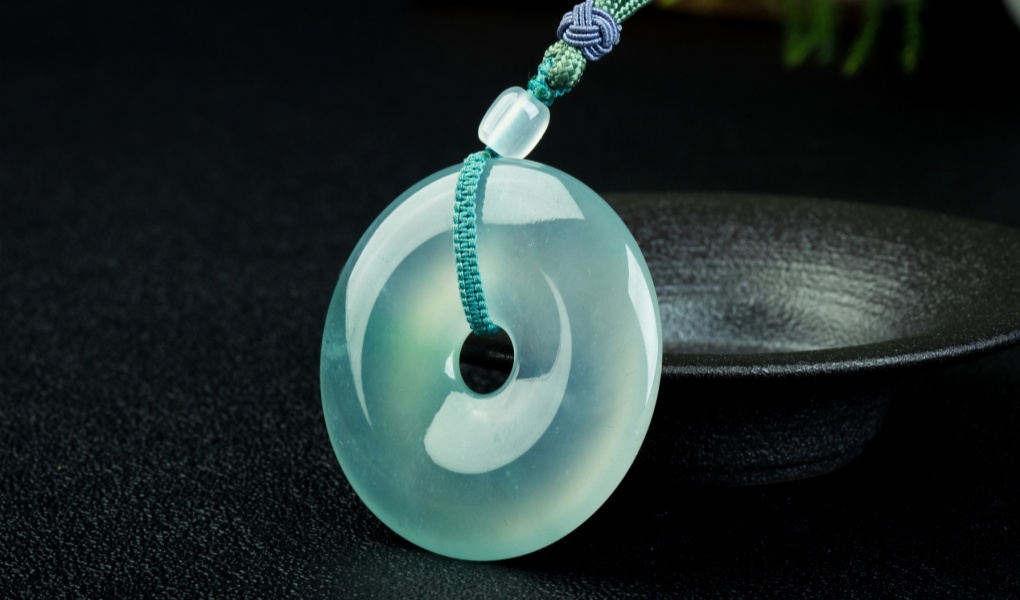
Jade Jewelry
In China, jade is far more than a pretty stone—it’s believed to carry spiritual protection, moral purity, and even healing power. For thousands of years, people wore jade to stay safe, balanced, and lucky. Ancient scholars compared jade’s inner glow to the soul’s clarity. Even today, gifting a jade bangle to a child or loved one shows a wish for peace and long life. It’s not just jewelry—it’s a quiet blessing you wear every day.
- Where to Buy: For genuine jade, head to trusted markets in Kunming, Ruili, or the Pingzhou Jade Market in Guangzhou. Large department stores and licensed counters in tourist areas like Shanghai’s Yu Garden or Beijing’s Wangfujing also offer good selections with certifications. Avoid overly cheap jade in roadside stalls—it’s often dyed or synthetic.
- Price Range: Entry-level jade pendants or simple beads may cost ¥100–¥300. Mid-range bangles and pendants made with natural jadeite typically fall between ¥800–¥2,500. High-end pieces carved from certified Hetian jade or imperial green jade can easily exceed ¥10,000, especially if artist-signed or antique.
- How to Bring It Back: Jade is sturdy, but the surface can scratch. Keep your jewelry in a velvet pouch or original box, and avoid putting it in the same compartment as metal or glass items. If you buy high-value jade, ask for a certificate of authenticity in case customs asks for documentation.
3. Chinese Lanterns — Light, Hope, and Celebration

Chinese Lanterns
There’s something magical about watching a Chinese lantern float into the sky or glow quietly on a street during a festival. Lanterns are more than decoration—they’re part of life’s biggest moments in China. From the Lantern Festival to the Mid-Autumn Festival, they represent reunion, hope, and the wish for a brighter future. Red lanterns hung at doors bring good luck, while floating lanterns honor ancestors or carry silent wishes. Bringing one home is like carrying a piece of celebration with you.
- Where to Buy: You’ll find lanterns in cultural districts like Qianmen (Beijing), Yu Garden (Shanghai), or Chenghuang Temple markets. In smaller towns or during festivals, local markets sell beautiful handmade lanterns. For collapsible ones, try airport shops or even convenience stores near major temples.
- Price Range: Paper lanterns cost as little as ¥5–¥20, especially during holidays. Mid-range collapsible silk or nylon lanterns range from ¥30–¥100. Larger wooden-frame lanterns or intricate hand-painted ones may cost ¥150–¥500 depending on craftsmanship.
- How to Bring It Back: Choose collapsible models—they fold flat and fit easily into luggage. Avoid real candles inside; use LED versions if gifting. For fragile wooden lanterns, ask sellers to wrap them with protective padding.
4. Mahjong Set — Family Bonding and Cleverness
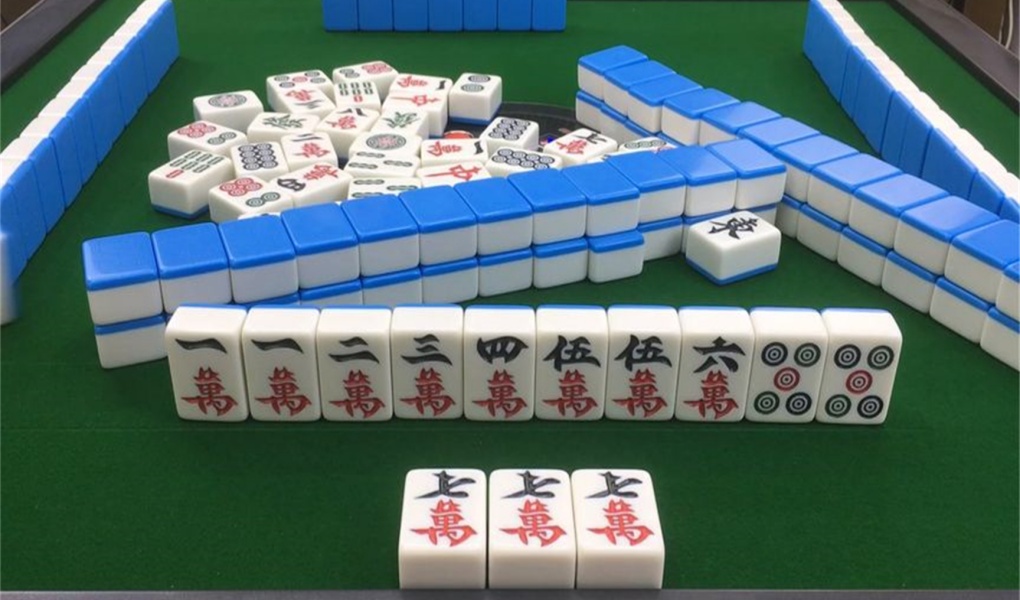
Mahjong Set
If you’ve ever walked past a park in China, you’ve probably heard the distinctive click-clack of mahjong tiles. It’s not just a game—it’s a full-on social ritual. Families play during holidays, friends gather over tea to play, and older folks treat it like mental gymnastics. A mahjong set makes an excellent gift because it’s deeply tied to Chinese leisure culture, and it’s surprisingly fun once you get the hang of it.
- Where to Buy: Most large bookstores (like Xinhua Bookstore) and toy shops sell compact sets. In places like Shanghai’s Fuyou Market or Beijing’s Panjiayuan, you can find beautiful carved sets made of bamboo, resin, or even bone. Airport gift shops carry lighter travel versions too.
- Price Range: Basic plastic sets cost ¥80–¥150, while mid-tier ones in a carry case go from ¥200–¥400. Deluxe sets made of stone, bamboo, or engraved resin may range from ¥500–¥2000 or more.
- How to Bring It Back: Full-size sets are heavy. Consider buying a travel-sized version or shipping heavier sets by parcel post. For checked baggage, wrap the tiles tightly to prevent rattling and damage.
5. Chinese Paper Umbrellas — Romance in Motion
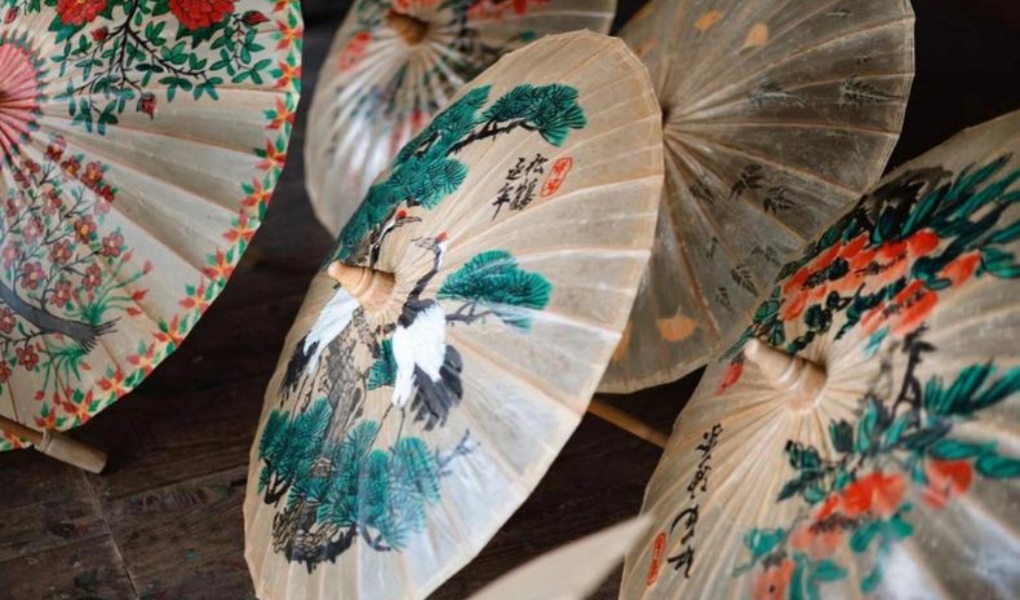
Chinese Paper Umbrellas
There’s a certain quiet elegance to a Chinese paper umbrella. You see them in old paintings, Chinese opera, and rainy alleyways in cities like Hangzhou or Guilin. Originally used to block both rain and sun, these umbrellas have become a symbol of grace and romance. In Chinese weddings, a red paper umbrella is used to ward off bad luck for brides. Tourists love them not only for the visuals but because they instantly connect you with Chinese aesthetics and tradition.
- Where to Buy: The best paper umbrellas are handmade in Sichuan’s Luzhou, Fujian’s Fuzhou, or Hangzhou. You’ll also find them in cultural souvenir shops in scenic spots, especially near lakes or classical gardens.
- Price Range: Simple decorative umbrellas cost ¥30–¥80, while functional waterproof ones or traditional hand-painted models can range from ¥100–¥300. Artisanal umbrellas with oiled paper and bamboo frames may go up to ¥500 or more.
- How to Bring It Back: These umbrellas are fragile, especially at the tips and ribs. Ask sellers for a storage sleeve, or wrap them in clothes in your suitcase. Some shops offer sturdy gift boxes—worth it if you're gifting one.
6. Sachets — Portable Blessings for Health and Good Luck
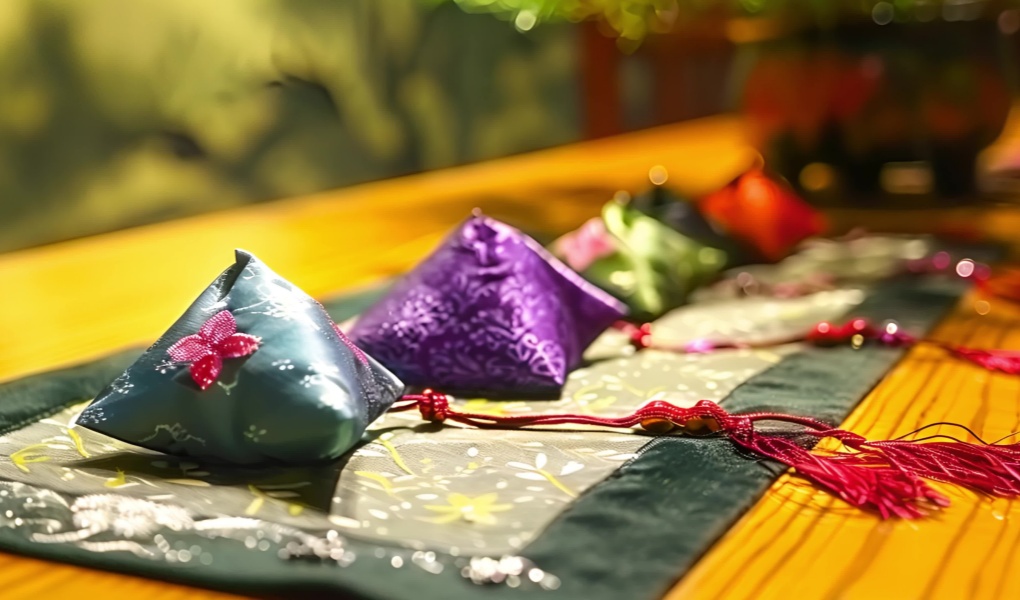
Sachets
You’ll often spot sachets (embroidered pouches) hanging from car mirrors, schoolbags, or even tucked into suit jackets in China. These tiny bags, filled with fragrant herbs like mugwort or cloves, are more than just air fresheners. They’ve been used for centuries to ward off illness, keep bad luck away, and express good wishes. During Dragon Boat Festival, it’s common to give sachets to children for protection. They’re light, meaningful, and easy to bring home—a charming, affordable keepsake that actually smells great.
- Where to Buy: Sachets are widely sold at local pharmacies, cultural gift shops, temple fairs, and street stalls during traditional festivals like Dragon Boat Festival or Lunar New Year. In cities like Xi’an, Hangzhou, or Lijiang, you’ll find embroidered versions with regional styles.
- Price Range: Simple herb-filled sachets cost ¥5–¥15, while embroidered or silk-wrapped ones are usually ¥20–¥50. Sets of mini sachets make perfect gifts and often come in decorative boxes under ¥100.
7. Dragon Figurines — Strength, Luck, and Imperial Power

Dragon Figurines
In Chinese culture, the dragon represents strength, wisdom, and good fortune. Unlike Western dragons, Chinese dragons are benevolent—bringers of rain, rulers of water, and protectors of power. You’ll see them everywhere: on rooftops, gates, embroidery, and New Year decorations. Owning a dragon figurine is like carrying a personal guardian. Many people place them at home or in the office to boost feng shui, especially during important life transitions.
- Where to Buy: You can find dragon figurines at most tourist markets, feng shui shops, and museum gift stores. Beijing’s Hongqiao Pearl Market, Xi’an’s Muslim Quarter, and Shanghai Old Street all have good selections, from wood carvings to jade dragons.
- Price Range: Small resin or wood dragons range from ¥30–¥100. Medium-sized ceramic or bronze figurines cost ¥200–¥600. Hand-carved jade or collectible bronze dragons can reach ¥1000+, depending on detail and size.
- How to Bring It Back: Resin or wood figurines are easy to pack. For fragile materials like ceramic or jade, ask for foam-wrapped boxes. If the dragon has long horns or tails, wrap extra padding around them.
8. Silk Products — Elegance and Imperial Heritage
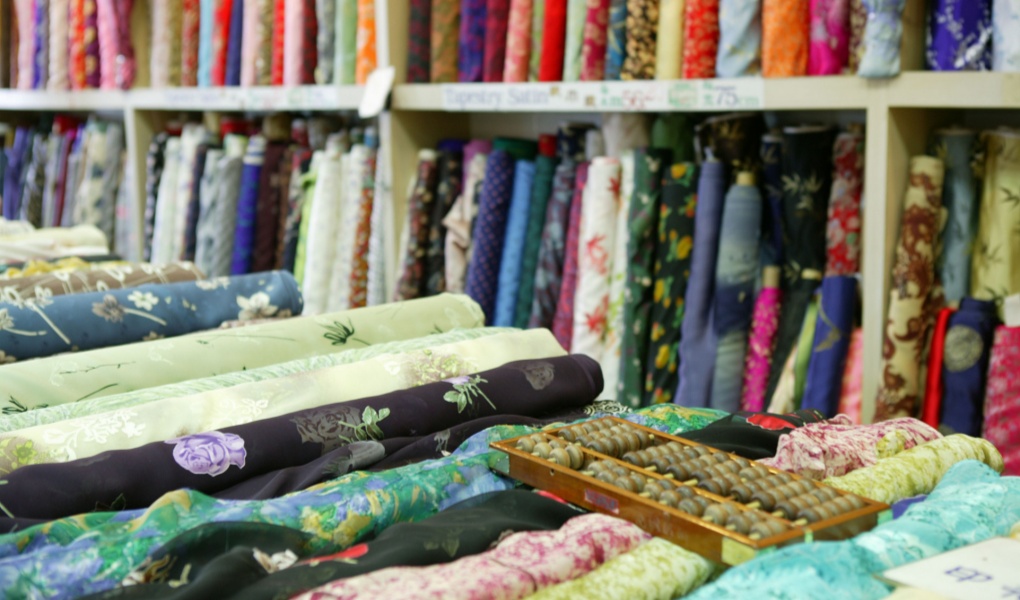
Silk Products
Nothing feels quite like Chinese silk—light, smooth, and cool against the skin. China has been producing silk for over 5,000 years, and it was once so valuable that it traveled the world via the Silk Road. Silk symbolizes refinement, wealth, and longevity, often used in weddings and ancestral ceremonies. Today, silk scarves, robes, and sleepwear are popular not just for their feel, but for their cultural weight. A silk gift says “I value you” in a distinctly Chinese way.
- Where to Buy: Authentic silk products can be found in Suzhou, Hangzhou, or Chengdu, where silk-making traditions still thrive. In major cities, visit Silk Museums, state-owned stores, or certified silk brands like Wensli.
- Price Range: Silk scarves start from ¥100–¥300. Silk eye masks, pillowcases, and sleepwear usually range from ¥200–¥800. High-end embroidered robes or tailored qipaos made with real mulberry silk can go from ¥1000–¥5000+.
- How to Bring It Back: Silk is lightweight and travel-friendly. To avoid wrinkles, roll rather than fold. Keep silk items away from sharp objects or liquids in your luggage.
9. Chinese Embroidery — Threaded Blessings and Stories
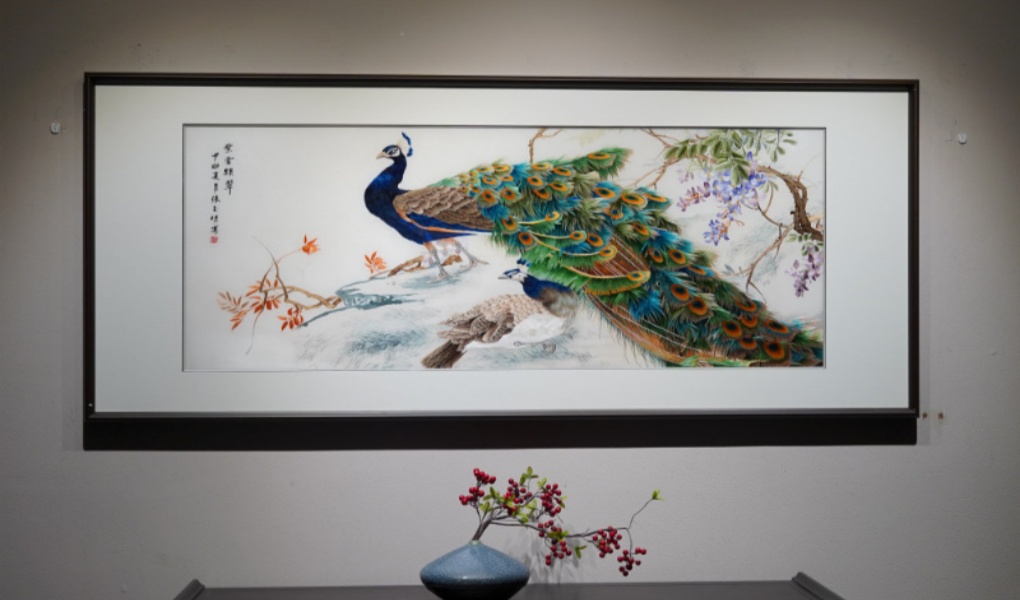
Chinese Embroidery
When I held my first piece of Chinese embroidery, it wasn’t the colors or patterns that got me—it was the stillness. Every thread felt like a quiet blessing, placed there one stitch at a time. You’re not just buying decoration—you’re holding a kind of patience, a wish made visible. A butterfly on silk, a dragon on red cloth—these are more than pretty images. They tell you something without speaking. I gave a stitched handkerchief to a friend and said, “This was made slowly, and on purpose.”
- Where to Buy: In Beijing, head to the National Arts and Crafts Museum gift shop or explore embroidery vendors in Panjiayuan Antique Market. In Shanghai, visit Tianzifang or Yu Garden Bazaar, where modern and traditional embroidery blend beautifully. You can also find regional styles from Suzhou, Guangdong, and Guizhou in curated museum shops.
- Price Range: Small embroidered bookmarks or patches are about ¥20–¥50. Larger framed pieces or embroidered clothing usually cost ¥200–¥1000. Antique or custom works can easily go beyond ¥5000.
- How to Bring It Back: Flat embroidery packs easily. For framed or delicate silk work, wrap it between clothes or ask for cardboard support.
10. Chinese Opera Masks — Courage, Identity, and Tradition
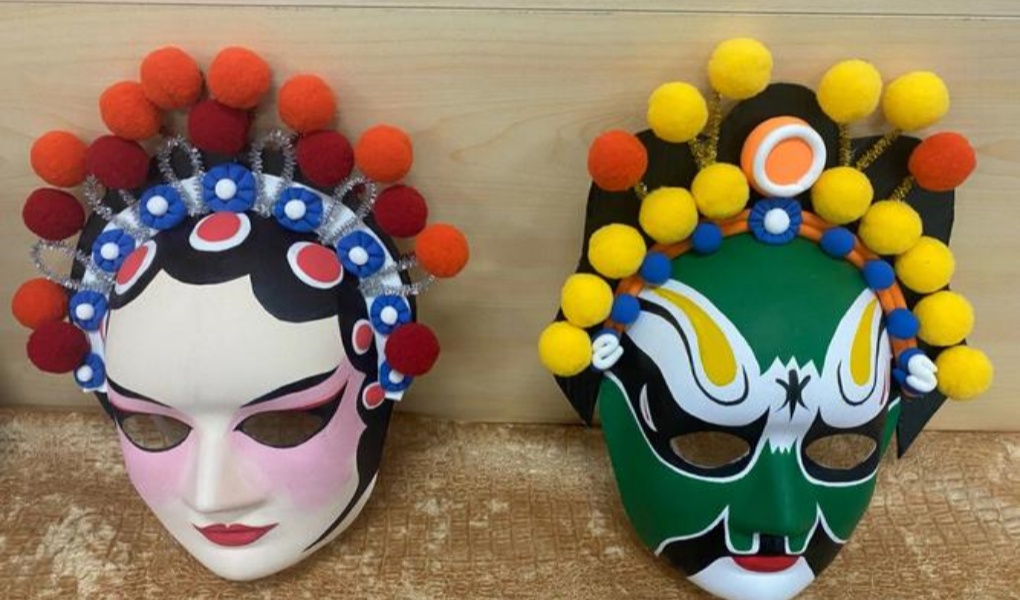
Chinese Opera Masks
If you're drawn to Chinese drama and bold color, a Beijing Opera mask makes a striking souvenir. Each mask color carries a role: red for loyalty, black for integrity, white for cunning. These masks reflect centuries-old character types, each instantly recognizable to fans of traditional opera. Beyond performance, they now decorate homes and galleries—small faces telling timeless stories.
- Where to Buy: In Beijing, shop around Qianmen, Liulichang Street, or the Liyuan Theater souvenir stalls. Shanghai’s Tianzifang and City God Temple area also offer hand-painted or ceramic versions, including magnet and plate formats.
- Price Range: Keychain and mini masks are ¥10–¥30. Mid-sized wall décor masks go from ¥50–¥300. Larger, detailed clay or porcelain ones range from ¥400–¥1000.
- How to Bring It Back: Lightweight masks travel well. For fragile ceramic or clay ones, ask for bubble wrap or a padded box.
11. Hand Fans — Poise, Charm, and Practicality
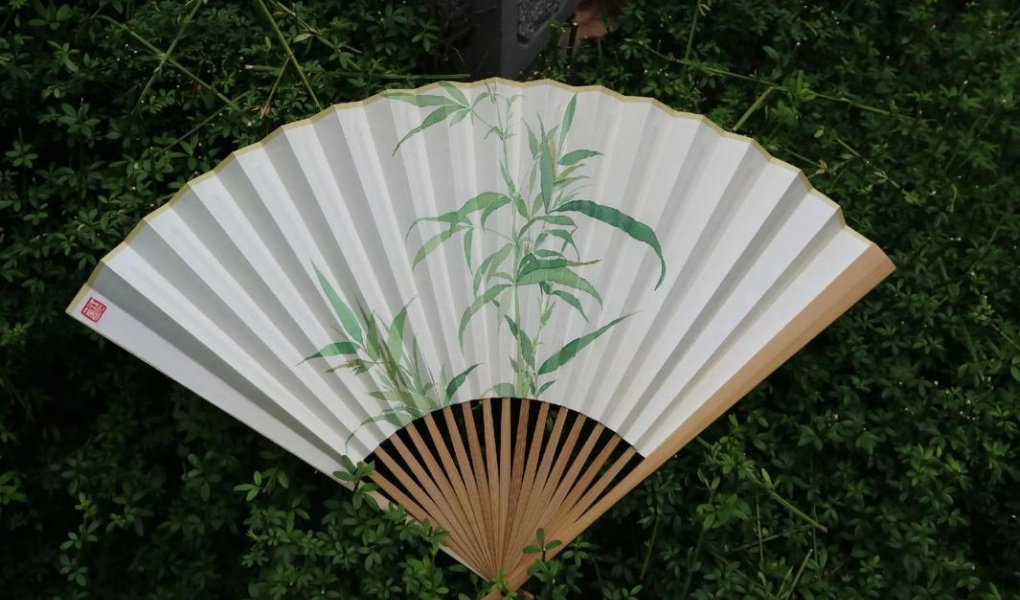
Hand Fans
I bought my first Chinese folding fan just to stay cool in Shanghai’s July heat—but it quickly became my favorite thing. It wasn’t just functional; it made me feel a little more graceful. A local explained how fans used to be gifted between poets, lovers, and friends. They’re practical, yes—but also symbolic of elegance and calm. I still carry mine in my bag, not for the heat anymore, but as a quiet reminder to slow down.
- Where to Buy: In Shanghai, go to Yu Garden, Tianzifang, or Chenghuangmiao gift stalls, where you’ll find silk and bamboo fans with local flair. In Beijing, check out Wangfujing Street, Liulichang, or shops near the Temple of Heaven. Some fans even come with calligraphy poems or landscape paintings.
- Price Range: Basic paper fans are ¥10–¥30. Silk or painted folding fans range from ¥50–¥150. Studio-made embroidered or hand-painted fans may cost ¥300–¥800.
12. Chinese Snuff Bottles — Miniature Masterpieces with Meaning
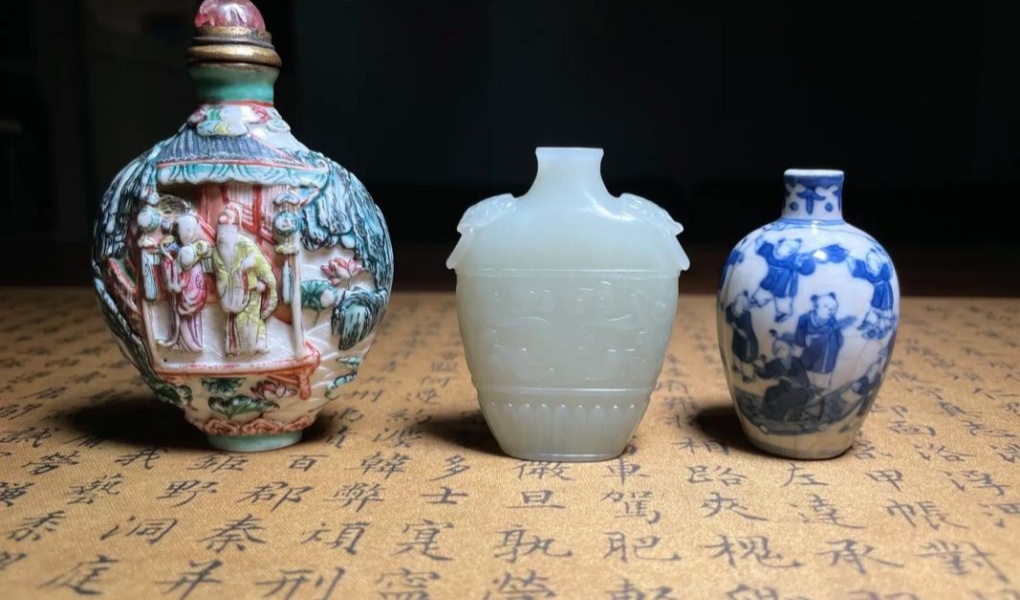
Chinese Snuff Bottles
At first glance, snuff bottles look like tiny perfume bottles—but in Chinese culture, they hold much more. Originally used to carry powdered tobacco during the Qing Dynasty, they’ve evolved into highly collectible art objects. Each one is different: glass, porcelain, jade, or inside-painted with mountains, birds, or calligraphy. Holding one feels like touching a private moment of the past. I bought mine not for the tobacco—but because it fits in the palm like a secret story.
- Where to Find It: You can find snuff bottles in antique markets like Panjiayuan in Beijing, or at specialty shops in Shanghai’s Old Street. For hand-painted or carved ones, check out Xi’an, known for Qing-style collectibles. Some museum gift shops also carry replicas with historical patterns.
- Price Range: Simple glass bottles cost ¥50–¥100. Inside-painted or carved ones range from ¥200–¥800. Antique or artist-signed versions can go above ¥2000.
- How to Bring It Back: These are small and travel-friendly. Wrap them in clothes or bubble wrap to protect delicate materials like porcelain or glass.
13. Porcelain Vases — Grace and Refined Taste

Porcelain Vases
You can’t think of China without thinking of porcelain. Delicate but strong, smooth yet detailed—it’s been a symbol of Chinese artistry for over a thousand years. A blue-and-white vase isn’t just decoration; it’s history on a surface. Whether it’s Song, Ming, or Qing–style, porcelain carries elegance that never fades. I bought a small one for my windowsill. Now every time I look at it, I think: this didn’t come from a factory. It came from a tradition.
- Where to Find It: Jingdezhen in Jiangxi Province is China’s porcelain capital, but you don’t have to go that far. Look for quality porcelain at museum shops, upscale markets in Beijing’s Liulichang, or Shanghai’s Duoyunxuan. Tourist streets in Foshan or Dehua (Fujian) also have strong local scenes.
- Price Range: Miniature vases start at ¥50–¥150. Mid-sized hand-painted ones are usually ¥300–¥1000. Collector-grade porcelain, especially from Jingdezhen, can exceed ¥5000.
14. Silk Scarves — Light Luxury with Cultural Depth

Silk Scarves
A Chinese silk scarf is one of those rare souvenirs that feels luxurious and meaningful at the same time. Light, breathable, and smooth, it adds elegance to any outfit. But it’s also a window into centuries of silk culture—from the Silk Road to the wardrobes of imperial courts. Some are printed with landscapes or traditional paintings; others are pure color, letting the material speak for itself. I bought one with crane embroidery, and every time I wear it, someone asks, “Where did you get that?”
- Where to Find It: Famous cities for silk include Hangzhou, Suzhou, and Chengdu. Visit local silk factories, government-run stores, or boutiques near silk museums. In Shanghai, try Wensli counters or stores inside major malls like HKRI Taikoo Hui. Tourist areas in Xi’an and Beijing also stock authentic scarves.
- Price Range: Printed scarves start from ¥100–¥300. Embroidered or designer pieces cost ¥400–¥800. High-end hand-stitched or 100% mulberry silk scarves may reach ¥1000–¥3000.
15. Red String Bracelets — Wishing for Safety and Love

Red String Bracelets
Simple, subtle, and full of meaning—red string bracelets are one of the most popular everyday lucky charms in China. Worn on the wrist or ankle, these thin red cords are tied to bless someone with safety, good fortune, or emotional protection. Some people wear them during travel or on special birthdays for extra luck. Others give them to loved ones as a way to stay connected. I was given one at a temple in Chengdu, and it became my quiet reminder to stay grounded, no matter where I am.
- Where to Find It: Red bracelets are sold in nearly every city, especially at temples, street markets, or stalls near tourist areas. For handmade versions, check out temple fairs in Beijing’s Lama Temple, Shanghai’s Chenghuang Temple, or souvenir markets in Xi’an and Lijiang.
- Price Range: Simple red cords cost just ¥5–¥15. Those with jade beads, mantras, or custom embroidery are usually ¥20–¥50. Sets or temple-blessed versions may reach ¥100.
16. Tea Sets — A Symbol of Hospitality and Harmony

Tea Sets
There’s something meditative about pouring tea into a small clay cup—and not just for drinking. Tea in China is about hospitality, calm, and respect. A Yixing clay teapot or delicate porcelain set turns a cup of tea into a ritual. I started with a simple set, but every time I use it, it makes my day feel slower in the best way. Gifting a tea set shows care, intention, and a connection to Chinese tradition.
- Where to Find It: Look for tea sets in Hangzhou, Jingdezhen, and Chaozhou, all known for tea culture. In Shanghai, visit Tianzifang or Tea City on Huaihai Road. In Beijing, explore Maliandao Tea Market, which also has ceramics and utensils.
- Price Range: Basic porcelain sets start at ¥80–¥200. Clay Yixing teapots or travel sets range from ¥200–¥600. Handcrafted or artist-signed sets can reach ¥1000–¥3000+.
- How to Bring It Back: Tea sets are fragile. Ask for styrofoam boxes or gift boxes with padding. Avoid carrying loose cups—pack them together securely.
17. Feng Shui Items — Channeling Energy and Balance

Jade Gourd
Whether you believe in it or not, walking into a room with a feng shui crystal ball or lucky coin charm just feels different. In China, feng shui is about aligning objects and space to create harmony—and souvenirs based on its principles are popular gifts for new homes, offices, or even travels. I picked up a brass coin charm tied with red string in Shanghai. It was just a simple trinket, but every time I saw it hanging by my suitcase, I felt a little more protected.
- Where to Find It: Feng shui items are sold at temples, feng shui shops, and markets across China. In Beijing, check Hongqiao Market or shops near Yonghe Lama Temple. In Shanghai, visit Old Street or feng shui specialty stalls near Yu Garden. Hong Kong also has famous feng shui stores, especially in Central District.
- Price Range: Basic charms or coin sets are ¥10–¥50. Crystal balls, brass animals, and hanging scrolls range from ¥80–¥300. Larger items like desk ornaments or jade trees may reach ¥800+, depending on material.
- How to Bring It Back: Most feng shui items are compact. Wrap crystal or glass pieces well, and ask for gift boxes for anything fragile.
18. Chinese Zodiac Figurines — Personal Symbols of Destiny
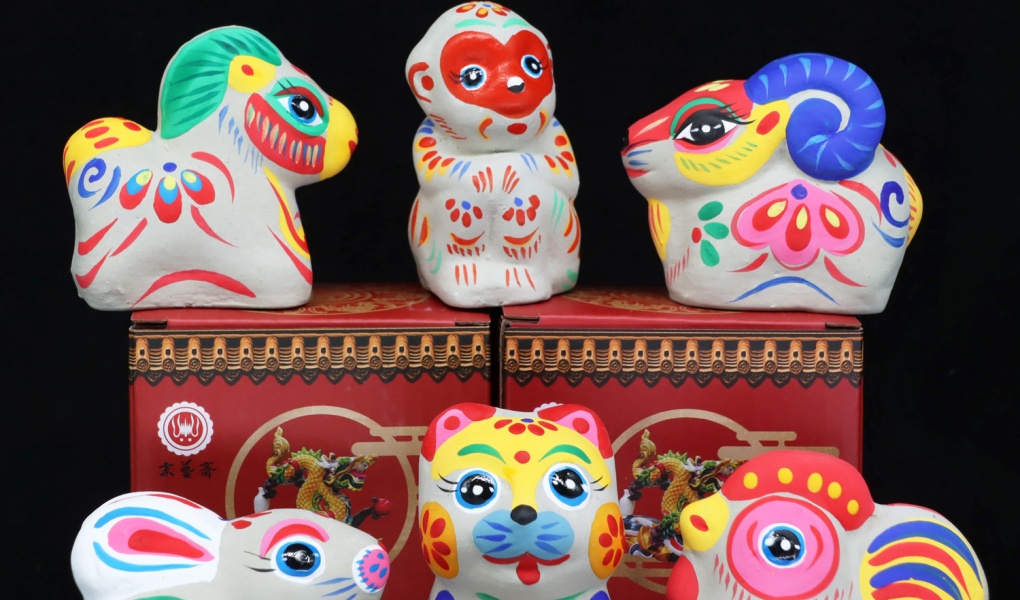
Chinese Zodiac Figurines
In Chinese culture, everyone is born under a zodiac animal, and these signs are more than personality traits—they’re about destiny, compatibility, and fortune. Zodiac figurines make great personalized souvenirs. I once gave a friend a small bronze ox (her sign) as a birthday gift, and she said it felt like I “actually knew her.” It’s a meaningful way to say, “I thought of you—in a very Chinese way.”
- Where to Find It: You can find zodiac sets or individual figurines in gift shops across Beijing, Shanghai, and Chengdu. Temple fairs during Lunar New Year are especially good places. For collectible sets, check museum shops or handmade clay markets in Hunan and Jiangsu.
- Price Range: Small ceramic or metal figures cost ¥20–¥50. Mid-range hand-painted versions range from ¥80–¥200. Full 12-animal boxed sets or jade versions may exceed ¥500–¥1000.
19. Antique Artifacts — History You Can Hold

Terracotta Warrior Replica
China’s history is long—and antiques offer a way to hold part of it in your hands. While real antiques require licenses to export, many shops sell reproductions of Qing coins, scrolls, teacups, or seal stones. I bought an old-style inkstone in Xi’an that wasn’t centuries-old, but still felt powerful. It’s the texture, the calligraphy, the smell of the wooden box—it makes history feel alive and tangible.
- Where to Find It: Explore Panjiayuan Market in Beijing or Shanghai’s Dongtai Road Antiques Market. For curated pieces, go to National Museum gift shops or licensed antique dealers in Luoyang or Nanjing. Look for labels like “reproduction” to avoid customs issues.
- Price Range: Reproduction items start at ¥50–¥200. Carved seal stones or scrolls cost ¥300–¥800. Collectibles with decorative boxes or calligraphy may exceed ¥1000, even if not genuine antiques.
20. Traditional Clothing — Beauty from Past Dynasties
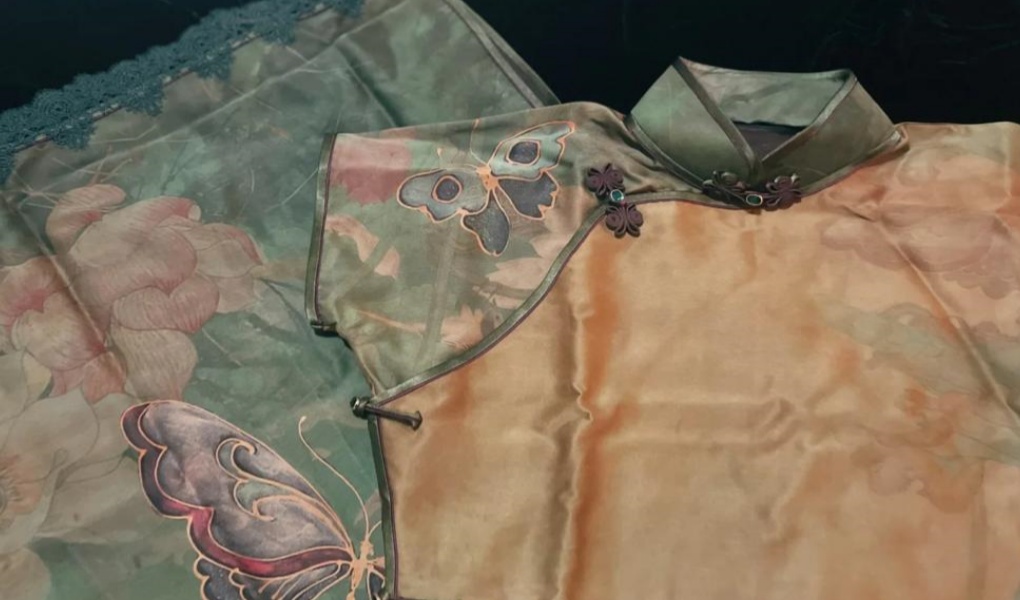
Qipao
Wearing traditional Chinese clothing—like a qipao or a Tang suit—isn’t just about looking elegant. It’s about stepping into a different rhythm, where every fold and stitch reflects centuries of artistry. I tried on a silk qipao in Shanghai, and for a moment, I felt like time slowed down. Whether for special occasions or stylish everyday wear, traditional outfits carry a quiet confidence and cultural pride.
- Where to Find It: In Shanghai, visit boutiques near Yu Garden, or custom tailors in Tianzifang. In Beijing, explore Nanluoguxiang or shops around the National Museum. For high-quality pieces, go to Suzhou or Chengdu where embroidery work is exceptional.
- Price Range: Cotton or polyester qipaos start around ¥200–¥400. Mid-range silk or brocade versions cost ¥600–¥1500. Custom-tailored, hand-embroidered garments can exceed ¥3000+.
21. Traditional Musical Instruments — Sound of Ancient Times
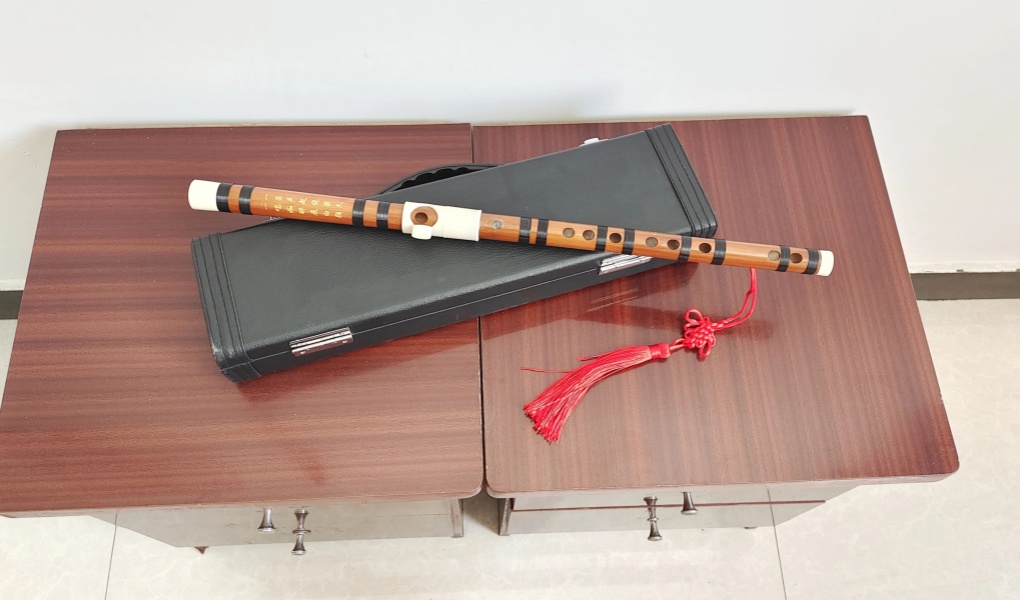
Traditional Chinese vertical flute
Few souvenirs are as immersive as a Chinese musical instrument. From the sharp twang of a guzheng to the playful chirp of a hulusi, these instruments carry the melodies of dynasties. Even if you don’t play, miniature versions are beautiful reminders of China’s artistic roots. I bought a small erhu as a decoration—and ended up trying to learn a song or two.
- Where to Find It: For full-sized instruments, check music shops in Beijing’s Xinjiekou or Shanghai Conservatory area. For miniatures or decorative versions, visit museum shops, tourist markets, or ethnic villages in Yunnan and Guizhou.
- Price Range: Miniature instruments cost ¥50–¥150. Entry-level full instruments range from ¥300–¥800. Professional-grade pieces or custom builds may cost ¥2000+.
- How to Bring It Back: Small instruments are easy to pack. For full-sized ones, request soft cases or foam wraps, and confirm carry-on rules with airlines.
22. Calligraphy Sets — Ink, Intention, and Inner Stillness
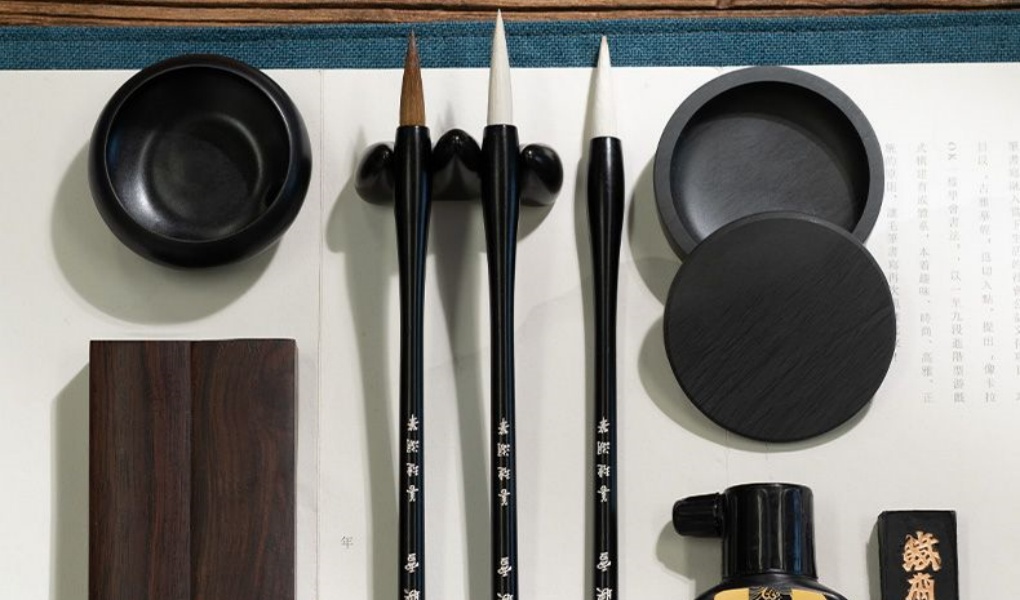
Calligraphy Sets
There’s something deeply calming about grinding ink and watching it flow across rice paper. Chinese calligraphy isn’t just about writing—it’s a meditative art form that reflects one’s personality, energy, and emotion. When I bought my first calligraphy set, I didn’t know how to use it. But the feel of the brush in hand, the scent of ink, and the quiet rhythm of practice made it a treasured routine. These sets represent discipline, beauty, and the lifelong pursuit of balance.
- Where to Find It: You’ll find calligraphy sets in Beijing’s Liulichang Cultural Street, Shanghai’s Fuzhou Road Bookstores, and traditional craft markets in Xi’an. Museums and art galleries across China also sell premium boxed sets. For a more local feel, check temple fairs or antique markets where older ink stones and handmade brushes are available.
- Price Range: Entry-level sets with a brush, ink, and paper start around ¥50–¥100. Mid-range kits in wooden boxes cost ¥150–¥500, often including carved ink stones. High-end collector sets with silk-lined cases or antique components can exceed ¥1000.
- How to Bring It Back: Keep ink bottles sealed and pack them upright. Brushes are delicate—use the original case or wrap them with soft cloth. Ink stones are heavy, so carry them in checked luggage with padding.
23. Shadow Puppets — Stories Told in Light and Leather
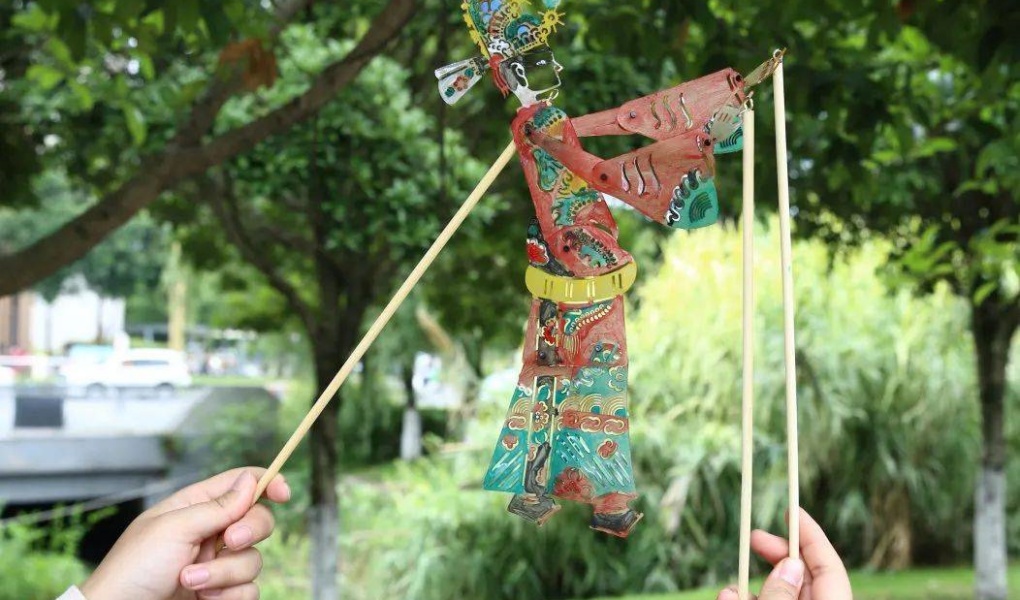
Shadow Puppet
This fascinated me long before I saw a live performance. The translucent colors, delicate joints, and mythical figures felt like something from a dream. In traditional Chinese theater, shadow puppetry was a way to share history, myths, and moral lessons—with characters dancing behind lit screens. I bought a puppet shaped like the Monkey King from Xi’an, and it hangs by my window now. It’s a piece of movable art, and every joint tells a part of a bigger story.
- Where to Find It: The best shadow puppets come from Shaanxi Province, especially Xi’an and Hancheng, known for their heritage troupes. You can also find them in cultural zones of Beijing (Qianmen or Panjiayuan) and Shanghai’s Tianzifang. Museums like the China Shadow Puppet Museum in Shaanxi often have shops selling handmade versions.
- Price Range: Small hand-cut puppets or keychain versions start at ¥30–¥80. Mid-sized, colored leather puppets with moving joints usually cost ¥100–¥300. Framed or collectible designs with intricate painting may go for ¥400–¥1000.
24. Chinese Knots — Lucky Threads Woven with Intention
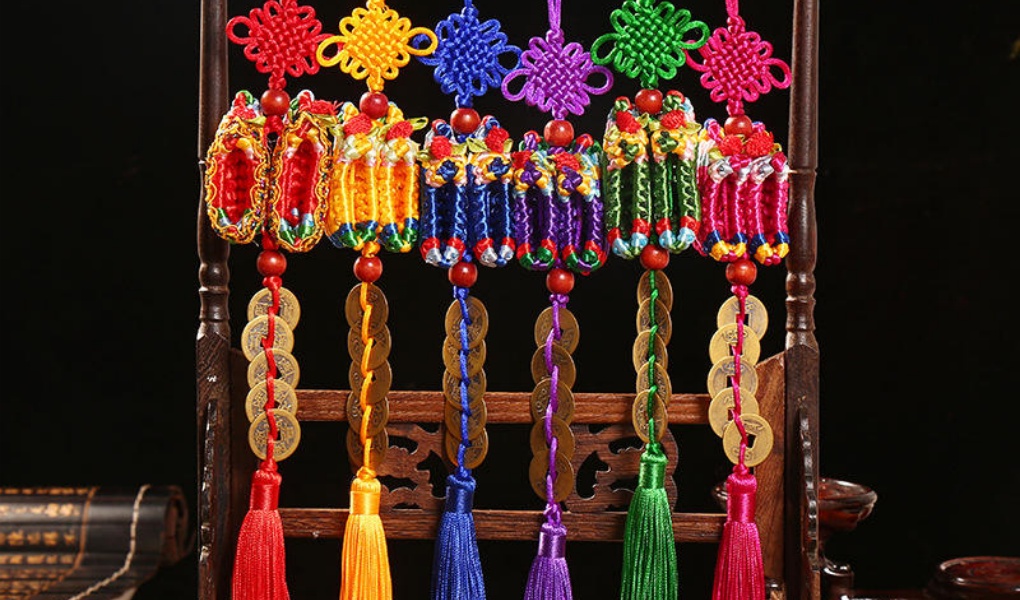
Different Colors Chinese Knots
Chinese knots may be small, but they hold big meaning. These red, intricate woven decorations are tied with a single thread, with no start or end—just like the wish they represent: eternal good luck. I picked one up at a temple fair and tied it to my backpack. Since then, I’ve kept one near my door, on my suitcase, even on my desk. They’re beautiful, lightweight, and quietly hopeful—exactly what a good souvenir should be. And because they’re inexpensive, I often buy a bunch and give them to friends. It’s a simple way to say, “I’m thinking of you.”
Where to Find It: These knots are everywhere—from temple fairs in Beijing, to Old Street in Shanghai, to souvenir stalls in Chengdu, Lijiang, or Xi’an. During Lunar New Year, they’re especially common in red-and-gold variants. Craft shops also sell more artistic or custom designs.
Price Range: Simple knots for bags or keychains start at ¥5–¥15. Wall-hanging versions with beads or tassels usually range from ¥20–¥60. Larger, decorative knots or those made with silk threads may cost ¥80–¥200.
Frequently Asked Questions (FAQs)
Q: What’s the best way to bargain when buying China souvenirs?
Bargaining is common in markets and street stalls across China. Start by offering half of the asking price, then slowly work up. Keep your tone friendly and smile—being too aggressive can backfire. If the seller insists the price is “lowest,” try walking away; they may call you back with a better offer. Note: Bargaining usually doesn’t apply in official gift shops, department stores, or museums, where prices are fixed. Learning a few Mandarin phrases like “Tai gui le” (too expensive) helps too. Always bargain smartly for China souvenirs.
Q: Can I mail China souvenirs home from China?
Yes, and it’s a smart option for bulky or fragile items like tea sets, lanterns, or porcelain. Major post offices (China Post) offer international shipping and basic English support. EMS is the fastest and most reliable. Bring your passport, write the recipient’s address in English and Chinese (ask hotel staff if needed), and clearly list the contents. Avoid mailing liquids, batteries, or anything marked “antiques.” Many tourist shops that sell China souvenirs also offer shipping services if you spend enough.
Q: What are the easiest China souvenirs to pack in a carry-on?
Lightweight, flat items are best: embroidered sachets, silk scarves, bookmarks, Chinese knots, or paper cuttings. These won’t take up much space and won’t trigger airport inspections. Avoid ceramic, glass, or items with liquid or battery parts. Folding fans and compact jade pendants are also great China souvenirs for carry-on—just use a soft pouch. Multi-item gift sets in decorative boxes also fit well into cabin luggage.
Q: What’s the best souvenir for friends if I’m on a tight budget?
Chinese knots, red bracelets, and scented sachets are perfect low-cost China souvenirs. They’re lightweight, full of cultural meaning, and usually under ¥20. These items are easy to pack and look thoughtful. Street stalls, temple fairs, or tourist markets offer great variety—just check the stitching or material before buying to ensure quality. Budget travelers will love how affordable these China souvenirs can be.
Q: Are there restrictions on bringing jade or antiques out of China?
Yes. Genuine antiques over 100 years old need an export certificate. Without it, customs may confiscate the item. Reproductions are fine, but label them clearly when packing China souvenirs. For jade, no special paperwork is needed unless it’s a high-value piece. Keep receipts and ask for certificates if available, especially if you're buying expensive China souvenirs.
Q: Is it safe to buy China souvenirs online while in China?
Yes—platforms like JD.com and Taobao are reliable if you have a delivery address. Many tourists order China souvenirs to their hotel. Be sure to filter by verified sellers and check reviews. Shipping within China is fast, usually 1–3 days, and items are often cheaper than in physical shops. Some stores even offer gift wrapping for China souvenirs.
Q: How do I know if a silk product is real or fake?
Real silk feels cool, smooth, and slightly textured when rubbed. If you burn a thread, real silk smells like burnt hair and turns to ash. Many shops that specialize in China souvenirs—especially in Suzhou or Hangzhou—provide authenticity tags. Avoid overly shiny items—they’re likely polyester blends disguised as genuine China souvenirs.
Q: Are gift shops at tourist sites more expensive?
Yes, usually. While convenient, shops inside attractions often charge 20–50% more for China souvenirs. For better deals, explore nearby streets or markets just outside the main gate. You’ll find similar items, often handmade, at more reasonable prices—and you can bargain too. It's one of the smartest ways to get authentic yet affordable China souvenirs.
Want more China travel ideas? Check out our city guides on Beijing, Shanghai, Guangzhou, and Chengdu.
